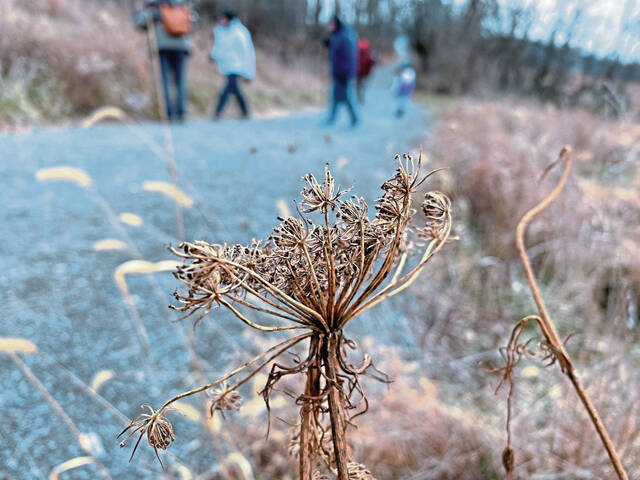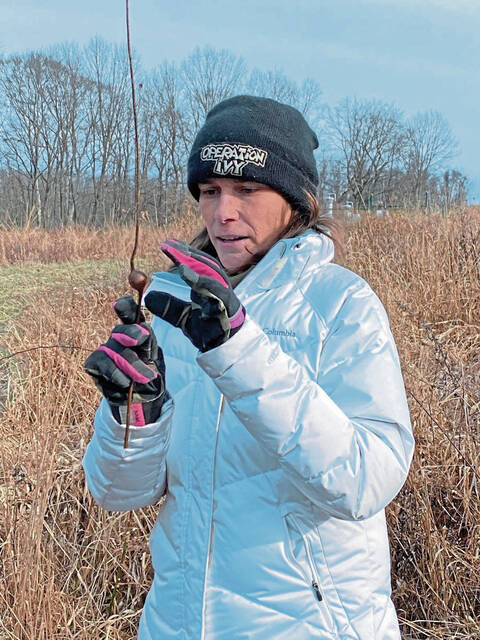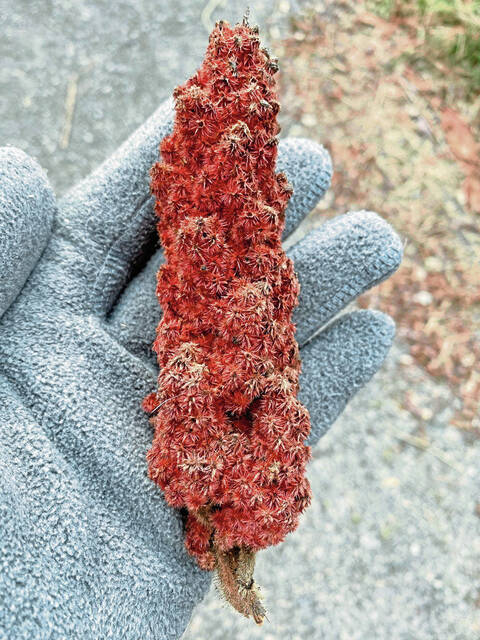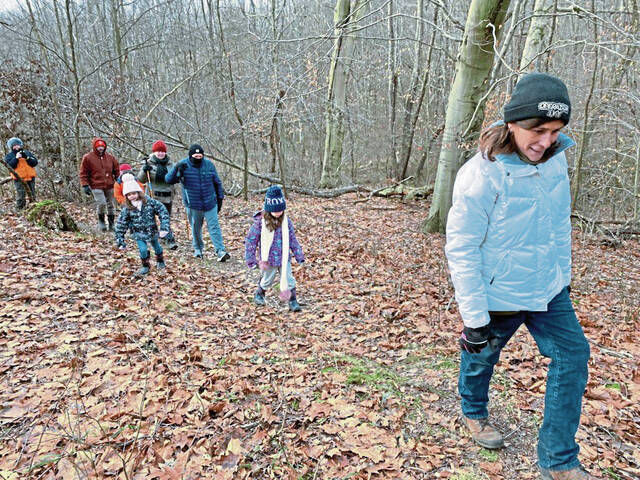There's actually plenty of life in the winter, as traipse through Murrysville nature reserve shows
The woods can be full of life in the wintertime — you just have to know how to find it.
It can be a good time to hunt for seeds or locate wild plants, said herbalist Lindsey Praksti. Finding what you’re looking for can be a challenge, though.
“At that point, you have to figure out what it looks like when it’s dead,” she said.
Praksti led a Winter Weeds Walk on Saturday at the Morosini Reserve in Murrysville, showing a half dozen participants the flora on property owned by the Westmoreland Conservancy.
President Shelly Tichy said the 183 acres off Route 66 was a working farm until the 1970s. It was donated to the conservancy several years ago to prevent development and is used for hiking, trails and educational events.
Bundled-up participants were led through about a half-mile of wooded areas on the cold January morning. Praksti helped them identify trees and plants, as well as other finds, such as a praying mantis casing and a gall on a goldenrod stem where an insect had burrowed inside and laid eggs.
She pointed out medicinal uses of some of the flora, and a few sampled ones that are edible.
Praksti detailed goldenrod that was “no longer golden” and Queen Anne’s Lace, which is a type of wild carrot.
“It’s good to learn that it’s growing here right now … because you want to pick it before it’s flowered,” she said of the plant that has delicate white flowers. “If you find this in the winter, you can get here in the early spring” and dig it up — while being mindful of poisonous lookalikes.
David Boles of Delmont was interested to learn about what’s in his backyard after following the work of naturalist and herbalist Doug Elliott.
Other plants identified on the walk can be turned into something edible or used to create clothing.
Praksti said the fruit from a sumac — red and shaped like a cone — can be used to make tea or lemonade. She demonstrated how to use dogbane, or Indian hemp, to create a rope-like strand. Native Americans cultivated the dark, thin plant, which Tichy said is plentiful around the reserve.
Renatta Signorini is a TribLive reporter covering breaking news, crime, courts and Jeannette. She has been working at the Trib since 2005. She can be reached at rsignorini@triblive.com.
Remove the ads from your TribLIVE reading experience but still support the journalists who create the content with TribLIVE Ad-Free.




